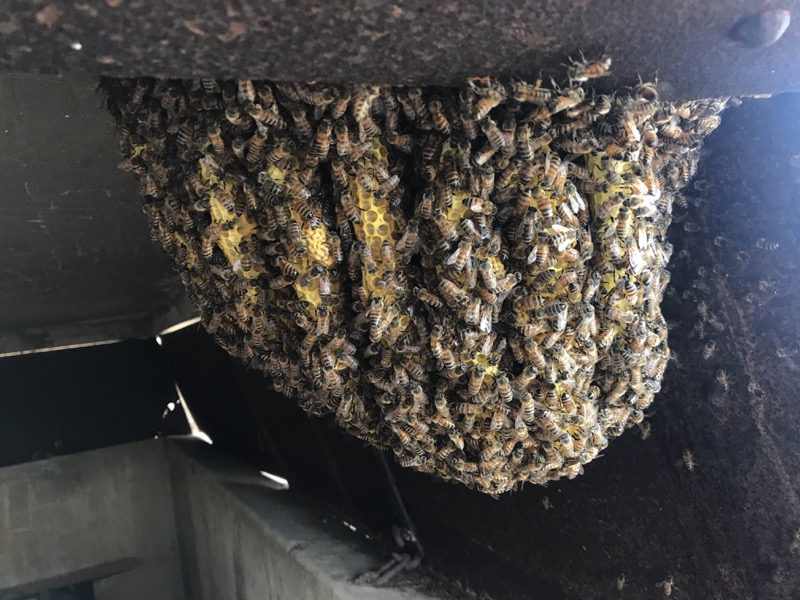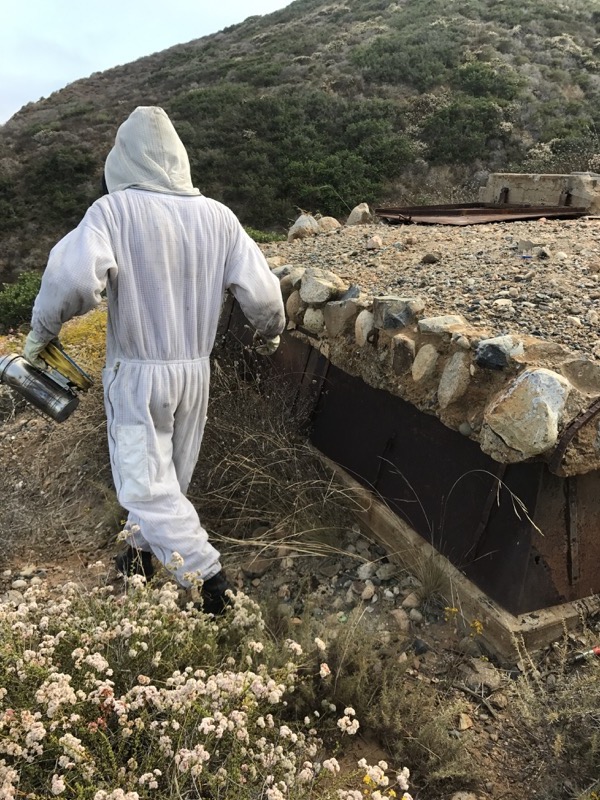 Girl Next Door Honey (used with permission)
Girl Next Door Honey (used with permission)“We hiked down a steep coastal cliff to access the WWll bunker where the bees had made their home. It was a large colony that had probably been there for a couple of months. They had already built 8 combs that hung 1ft down from the ceiling of the bunker. The bees cluster around the combs to keep the larvae developing inside them properly warm. The combs also stored a small amount of honey and pollen which is used as food by the hive.”

Girl Next Door Honey (used with permission)
“This colony probably had about 30,000 bees living in it. We transferred each comb to our beehive box, placed it so the bees could find it and waited until sundown for all the bees to return to the hive. During the day many of the bees are out collecting nectar and pollen from flowers. When the sun sets they all return to the hive for the night. We closed up the box and hiked out of the park carrying the 30lbs of bees!”
 Girl Next Door Honey (used with permission)
Girl Next Door Honey (used with permission)“It was incredible to get to see a part of the park that many do not get to see. The wild coastal scrub brush was blooming all around the bunker. I tried to envision what it must have been like for the servicemen who sat in the bunker during WWII and laughed at the absurdity of what I was now doing in it! What an incredible experience. Thank you Cabrillo for helping to save the bees!”

Girl Next Door Honey (used with permission)
For more information on bees, Hilary, and Girl Next Door Honey, check out: http://girlnextdoorhoney.com
